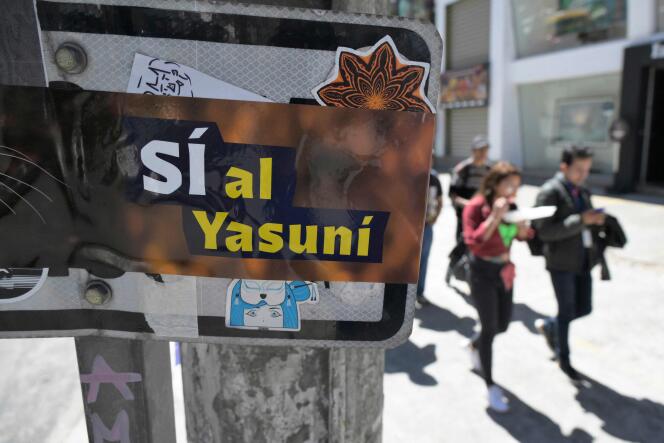


Ecuadorian environmentalists and their opponents agree on one thing: the battle for Yasuni Park is not over. On Sunday, August 20, the former celebrated the victory of the "yes" vote in the referendum they had been demanding for 10 years. With a 59% majority, Ecuadorians voted in favor of halting oil production in Block 43 Ishpingo, Tambococha and Tiputini (ITT) of the Yasuni Amazon Reserve, located in the northeast of the country. Supporters of the "no" vote are concerned about the economic consequences of this citizen's decision, if they do not contest its validity.
"Ecuador has set an example of climate democracy for the world," rejoiced the activists of Yasunidos, the collective that has been advocating for the closure of the ITT deposit since 2013. Mobilized alongside the indigenous populations, they now intend to ensure that the result of the vote and the decision of the Constitutional Court are respected. In authorizing the referendum, the court specified that, in the event of a "yes" vote, the authorities would have one year to proceed with the "progressive and orderly" dismantling of the oil installations deployed in the park.
However, the authorities consider the deadline set by the court to be unrealistic. Three days after the referendum, the energy and mines minister, Fernando Santos, told the press that "never in the history of oil has such an important field been closed so suddenly." Block 43 produces around 58,000 barrels of crude oil a day, representing 12% of Ecuador's national production. The dismantling of oil installations is "a very complex process," said the minister, as it involves the dismantling of infrastructure "representing thousands of metric tons of steel, cables, installations of all kinds." According to Santos, "the one-year deadline is physically impossible to meet unless bulldozers are used."
Covering an area of 10,000 square kilometers, Yasuni National Park is both one of the world's most biodiverse regions and the habitat of the last indigenous peoples in voluntary isolation in Ecuador's Amazon rainforest. In 1989, the UN declared it a "biosphere reserve." In 2013, former President Rafael Correa's attempt to secure international aid in exchange for refraining from oil exploitation in Block 43 proved unsuccessful. Subsequently, Correa gained approval from the National Assembly to proceed with the exploitation of ITT's deposits, leading to the commencement of crude extraction in 2016.
Block 43, with its 12 platforms and over 230 active wells, extends over 80 hectares, some 180 kilometers from the edge of the forest. It is accessible via the Napo River and a 15-kilometer track. "It's true that dismantling the installations represents an unprecedented technological challenge in these conditions," confirmed Fernando Reyes, an oil engineer and consultant. "The one-year deadline is certainly not achievable, but the authorities must quickly present an action plan."
You have 48.22% of this article left to read. The rest is for subscribers only.
